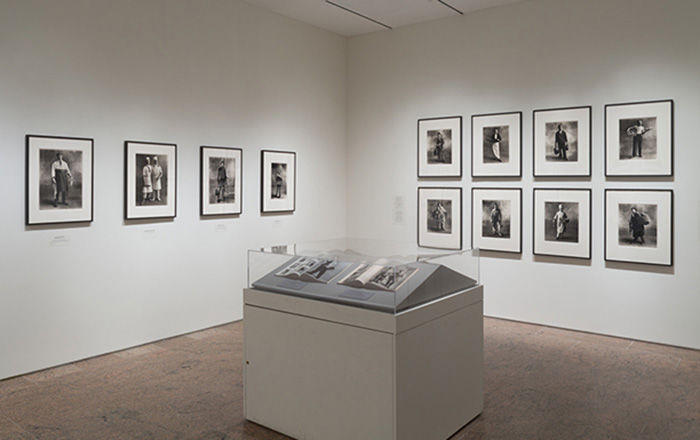"Gustave Flaubert sieht seine Geliebte"
Gerhard Richter German
Not on view
This unique Polaroid print is the earliest known photographic self-portrait by the artist. In the 1960s, Richter revolutionized painting by using the most humble, nonartistic or "vernacular" images as his inspiration: crude family snapshots and gritty news photos, advertisements and pornography that he gathered into his ongoing Atlas (1961-present). Intensifying his source material's cool surface sheen and frequent blur, the artist used "painting as a vehicle for photography," recognizing that our primary access to the world, or "what touches us," is experienced through the distancing lens of a camera.
Everything about this work is suffused with Richter's characteristic irony: reversing his normal procedure, the artist produces a photograph that uncannily resembles one of his trademark paintings of the period. His intentional inclusion of technical flaws in the image-from absence of focus to the fingerprints left during processing-relates to similarly "amateurish" uses of the medium by such Conceptual artists as John Baldessari, Vito Acconci, and Ed Ruscha.
In his humorous caption, however, Richter ties the entire work together, linking himself to an earlier Realist with the heart of a Romantic, the author of Madame Bovary, who both coolly skewered and secretly identified with his delusional heroine to the point where he declared to an interviewer, "Emma Bovary, c'est moi!" Under cover of being "mischievous and prankish and not too serious," Richter reveals that his deliberately deadpan approach, like that of his contemporary Andy Warhol, masks a compulsive quest for the limits of the visible to communicate emotion and experience.
This image cannot be enlarged, viewed at full screen, or downloaded.

